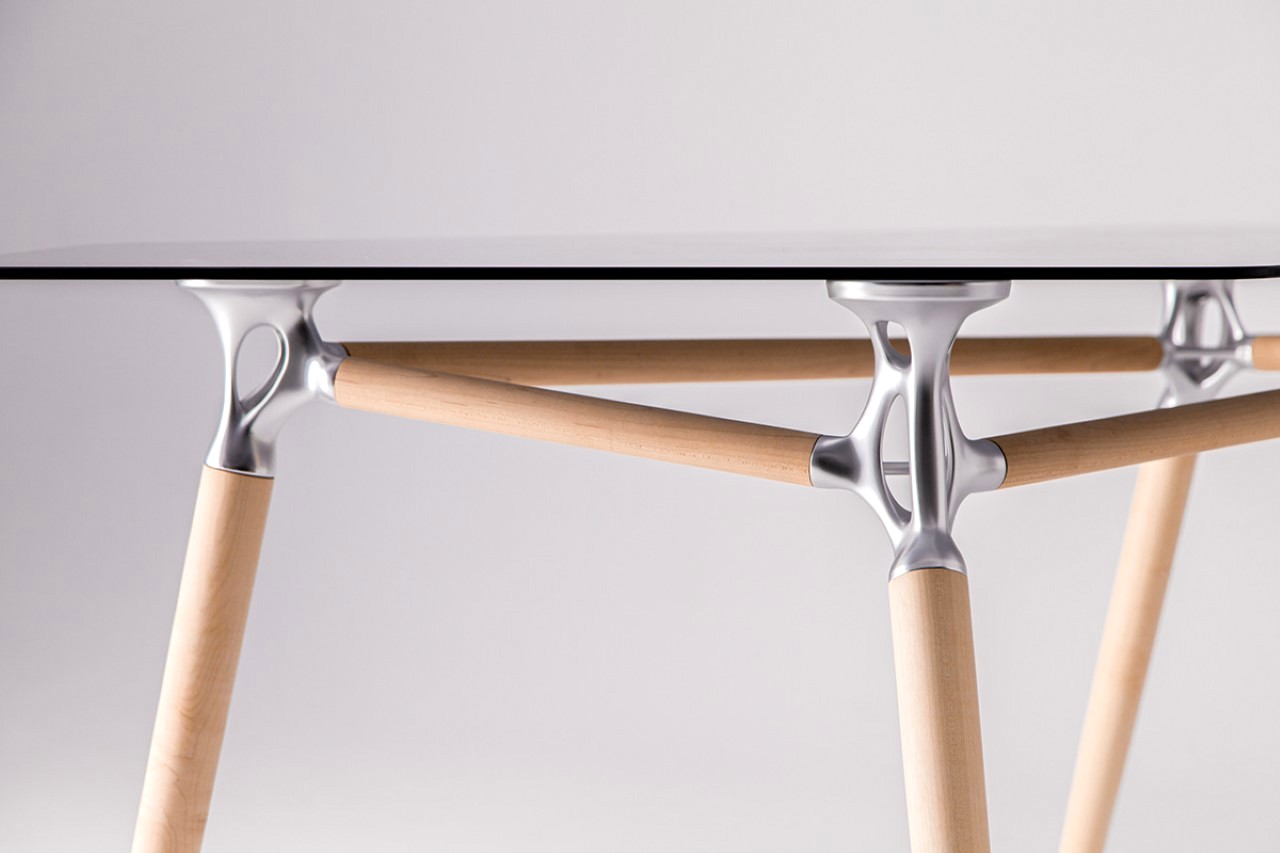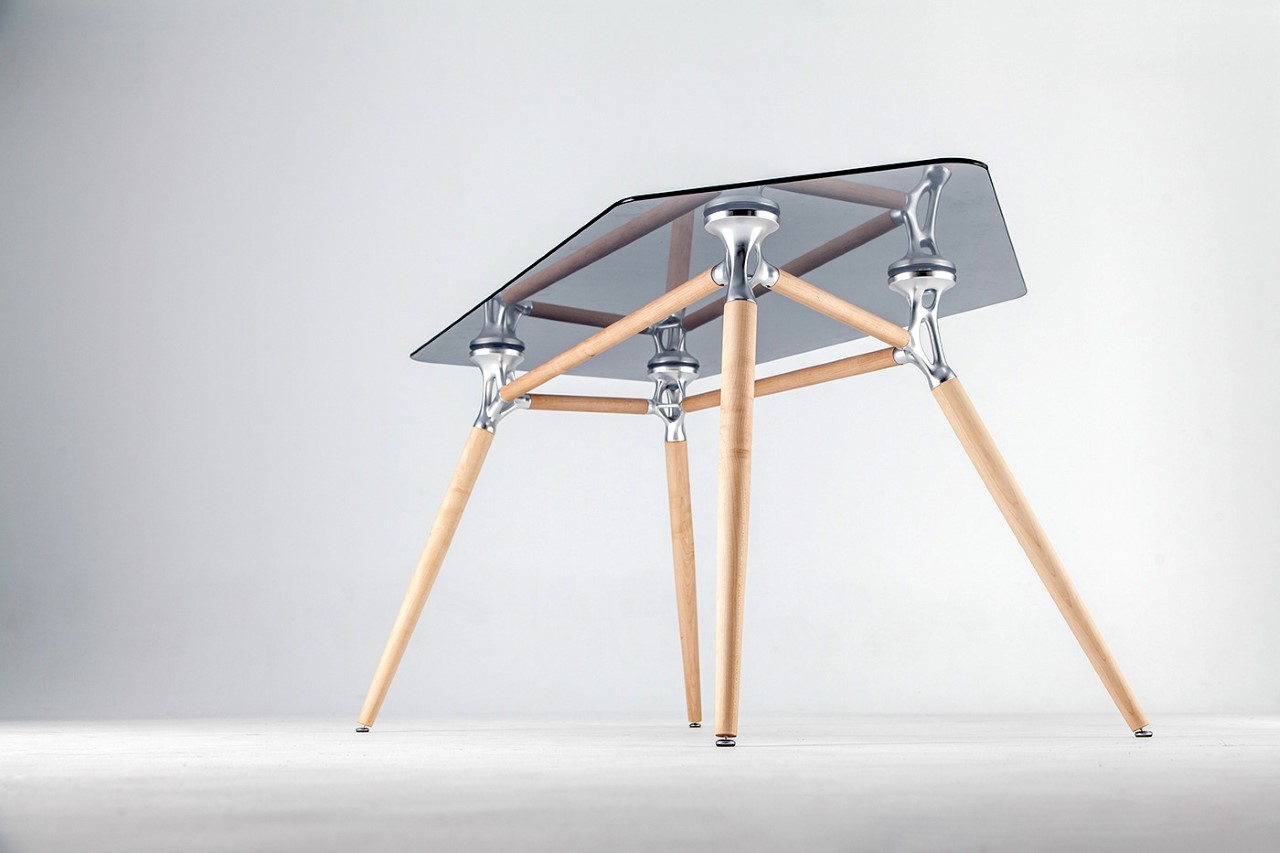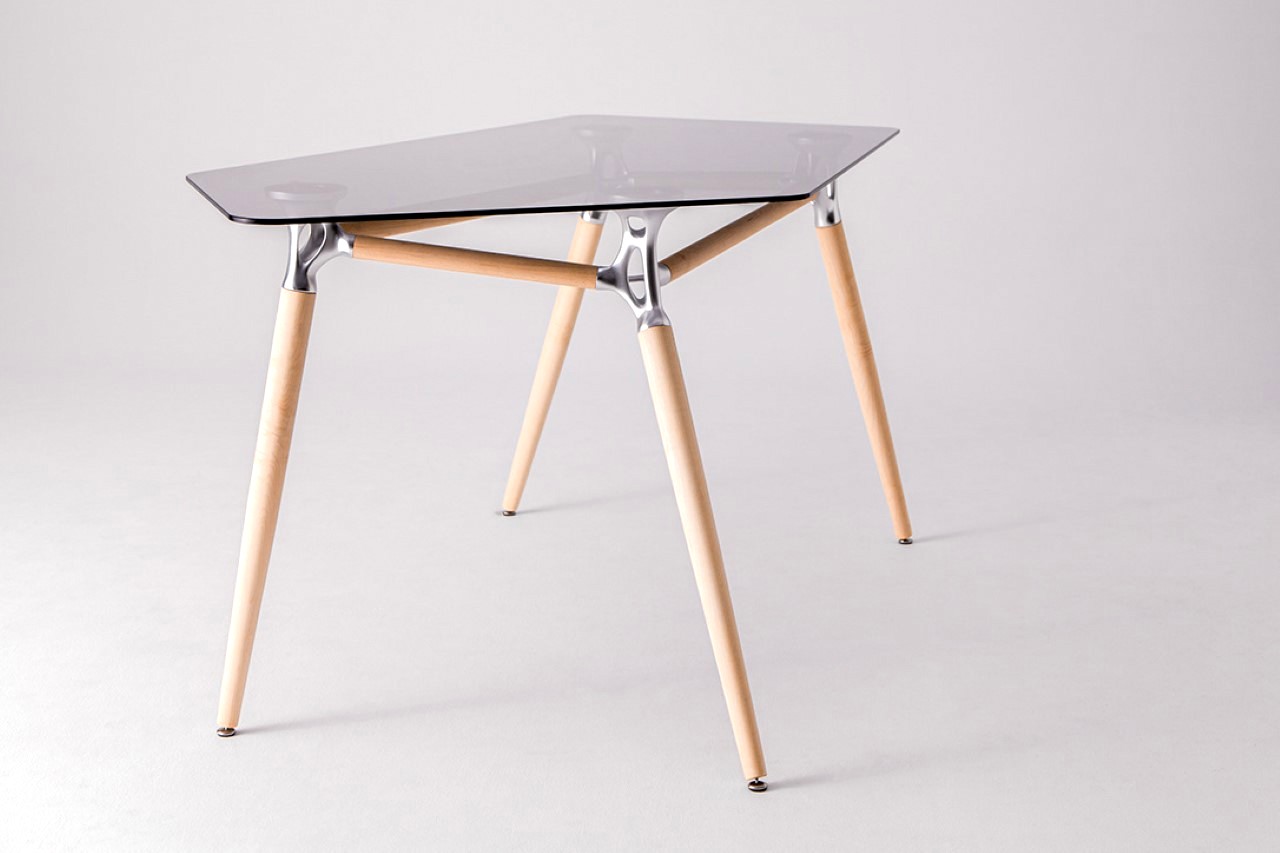
The Generative Desk is rather simple to look at. All you really see is a glass surface, 8 wooden columns, and four metal fixtures that bring the desk together. However, behind that simplicity is a fair bit of computational design that gives the desk its minimalist-yet-unique character, as well as its strength. The metal fixtures used to connect the wooden columns and support the glass panel were created using a process called generative design. Built by algorithms, the metal element’s organic design was arrived at by simply feeding inputs and information into the CAD software, and allowing it to create a form that was strong enough to take on high loads, while using as little material as possible. If the metallic fixtures look even remotely organic (like bones), it isn’t an accident… generative design relies on the same principles that guide natural evolution, by building something that is purely designed to be functional and durable.

The fixtures are 3D-printed out of metal, before being sanded or sand-blasted for their matte finish. Their hollow design is engineered to take the weight of the glass panel as well as anything you may put on top of it, while cutting down on as much material as physically possible. This gives the Generative Desk its quirky organic character that’s difficult to ignore, while the 3 different materials come together to play their parts.
Designer: Yin Man Chan



Tidak ada komentar:
Posting Komentar